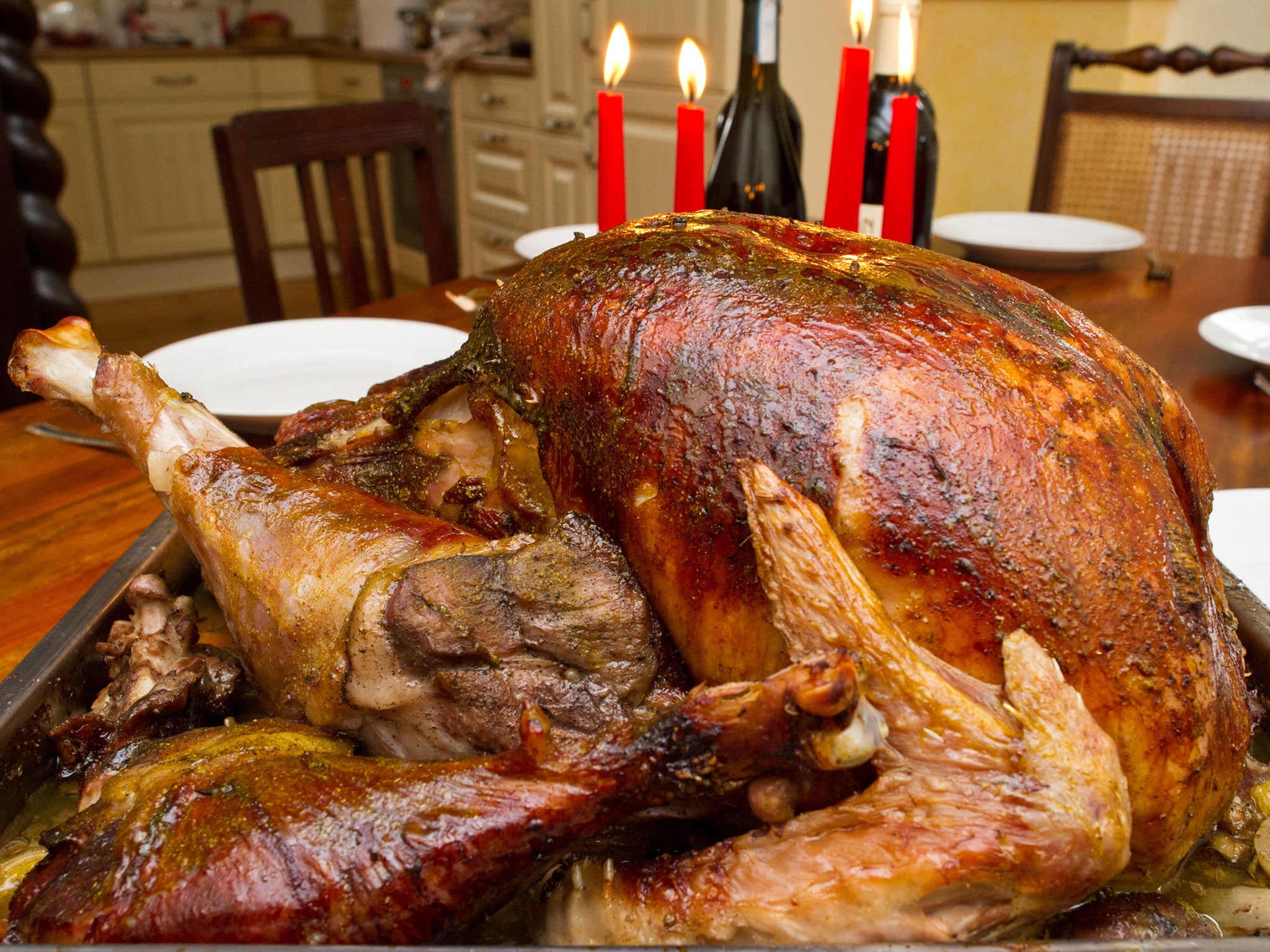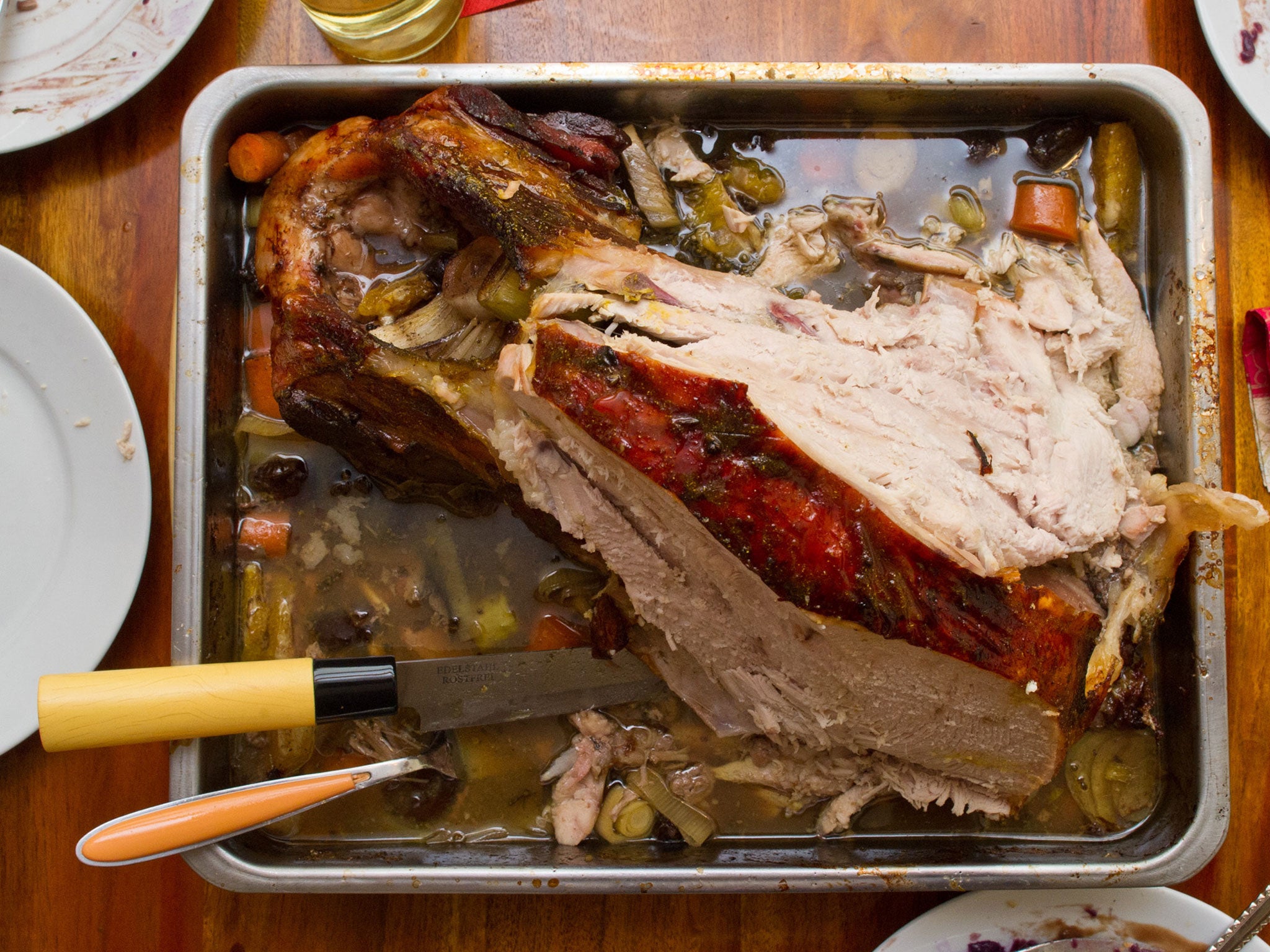Festive food: Annie Bell on how to find the perfect turkey for your Christmas dinner
Christmas comes but once a year, so you won’t want to scrimp on your bird

Your support helps us to tell the story
From reproductive rights to climate change to Big Tech, The Independent is on the ground when the story is developing. Whether it's investigating the financials of Elon Musk's pro-Trump PAC or producing our latest documentary, 'The A Word', which shines a light on the American women fighting for reproductive rights, we know how important it is to parse out the facts from the messaging.
At such a critical moment in US history, we need reporters on the ground. Your donation allows us to keep sending journalists to speak to both sides of the story.
The Independent is trusted by Americans across the entire political spectrum. And unlike many other quality news outlets, we choose not to lock Americans out of our reporting and analysis with paywalls. We believe quality journalism should be available to everyone, paid for by those who can afford it.
Your support makes all the difference.If you are only going to eat turkey once a year, it seems fair to want the very best. A bronze, correct? Actually, make that a free-range bronze. And, with today’s deliveries and online shopping services, we don’t even need to get up at 6am to join the queue snaking round the block. What could be easier? Mouse at the ready, add to basket, job done.
Or not, perhaps. A few more clicks takes me to Marks & Spencer’s website, where I can choose from five different whole turkeys – a traditionally dressed free-range bronze, a free-range turkey, an organic bronze free-range turkey, a butter-basted Oakham turkey stuffed with pork, cranberries and clementines, and a Pembrokeshire bronze free-range turkey. Oh yes, and nine different types of crown and breast.
And suddenly I realise that, actually, I haven’t got a clue. While it’s lovely to have so much choice, I really don’t know where to start. What should I be looking for and what is quality based on? Do all these different turkeys honestly taste that different?
It is hard to divorce the words “bronze turkey” from the farmer and breeder Paul Kelly, whose family have taken such pains to put it back onto our menus. “Up until the 1950s, all turkeys were bronze,” Kelly says, deriving from the original bird, which came over from Mexico. But around the time that consumers started to demand ever-whiter bread, they also developed a distaste for the blackened stubble on a turkey. Through breeding the feather colour out of the bird, before long, a white became standard. “A white turkey in effect is an albino, in layman’s terms,” Kelly says.

And then, to satisfy the demand for white meat over dark, breeders concentrated on developing bigger breasted and faster-growing birds. And voilà, the “standard fresh” turkeys of the Sixties and Seventies that were all size and swank and no flavour became the norm on our Christmas tables. Little could save them except enough gravy to offset their shortcomings.
Some 30 years back, the Kelly family made it their mission to rescue what remained of the bronze stock, buying up isolated pockets from around the country and merging them into a single flock to establish a breeding programme. The Kelly bronze is the bird by which we judge all others, and they supply poults to farmers throughout the country.
Would that the story ended there, happily. Today, although all of the supermarkets will offer a bronze in their premium range, only about 75 per cent of those are what Kelly refers to as “bronze on bronze”, that is both ma and pa. The remainder are bronze on white, the darker colour being the dominant gene, a practice that may well increase as retailers look to reduce costs by breeding the bronze feather on to fast-grown whites. Trying to find out whether your bird is pure or mixed breed is a hiding to nowhere. It certainly won’t be in Ocado’s small print, or any other supermarket’s for that matter, and, often, even good independent butchers will be left scratching their heads and disappearing into the back room for advice.
So, as consumers, we need to look beyond the colour of the bird’s feathers for other indicators, and the three words that speak volumes are “mature”, “dry-plucked” and “hung”. It is only once a bird reaches some 20 weeks that it starts to lay down fat deposits and develop the marbling and the carcass deposition that will give you the all-important bone marrow that in turn means tasty juices. The high-end producers are slaughtering around the 23 to 28 week mark. “The average age of slaughter for a standard white is 12 to 15 weeks, half way through their development,” Kelly says. “They’re killed at the right weight rather than when they are ready to eat.”
But it is dry-plucking that promises the full luxed-up treat. As you can imagine, it is a labour-intensive process, and is only carried out on small farms. So straight away we have a guarantee of artisanal production, that is promise of alluringly crisp skin and succulent flesh. The mass-produced wet-plucked birds with their damp skin and watery flesh are all‑too‑familiar.
It is also quite telling that the campylobacter bacteria that plagues the chicken industry is not an issue in dry-plucked turkeys. “I regularly eat turkey tartare at presentations”, Kelly says. “And people have a fit.” Many platefuls down the line, he’s still here to tell the tale. Wet-plucking enourages the growth of bacteria, which in turn rules out the option of hanging, the last in the link of quality indictors, that encourages the connective tissues and collagen to break down and the flavour to develop.
So just how many of the turkeys out there are likely to be bred to this standard? Sadly, not as many as we might like. Around a million prime turkeys grace tables across the UK, with about five million lesser white turkeys – although there are stirrings that may yet shift the bronze/white balance further.

Being the creatures of fashion that we are, the drive is now on for more exclusive birds, heritage types or ones with feathers of a different colour.
Fortnum & Mason sells a bourbon red (for an eye-watering sum), while Tesco is offering a Narragansett in its Finest range. And there is, of course, the Norfolk black, slightly gamier than a bronze, related to the Spanish black. The irony being that all of these niche feather colours and varieties are mutations of the original bronze turkey. Right back where we started.
BUYING guide
Expect to pay upwards of £80 for a 4kg dry-plucked, mature bronze, about twice the price of a standard bird. Buying directly from the producer is the surest route to getting answers to questions that matter. This year the NFU has installed an ingenious tool on its website, where, by inserting your postcode and radius of choice, they will list the farms closest to you. NFU Turkey Finder, nfuonline.com
Kelly Bronze
This trademark pure bronze is available from the breeders as well as countrywide from other producers. kellyturkeys.co.uk, last orders 18 December
Godwick Turkeys
Bronze turkeys and the old heritage Norfolk black are reared as a mixed flock by this producer, who dry-plucks and hangs for 12-14 days. godwickturkeys.com, last orders 21 December
Packingtons
For those who want the superior finish of a mature artisanal turkey, Packington’s cockerel is as close as we are likely to get to a Continental Capon, but humanely reared. These come up the same size as turkeys, but cost about a third less. packingtonfreerange.co.uk, last orders 20 December
Fortnum & Mason
This high-end Red Bourbon is an exclusive breed, reared on a farm in Oxfordshire to F & M’s specification. fortnumandmason.com, last orders 16 December
Waitrose
Crowns are not to be recommended over a whole turkey, although one that can hold its own is a ‘Heston’. This breast plus brining kit, herb butter and jus makes for excellent eating with both depth and delicacy, and a party trick thrown in. waitrose.com, £55
Join our commenting forum
Join thought-provoking conversations, follow other Independent readers and see their replies
Comments